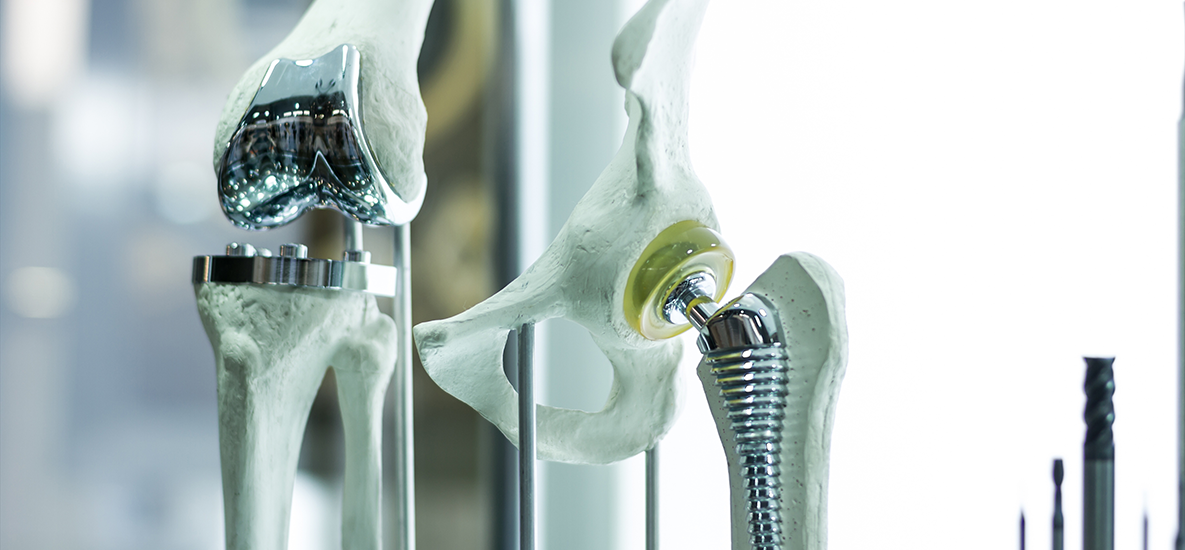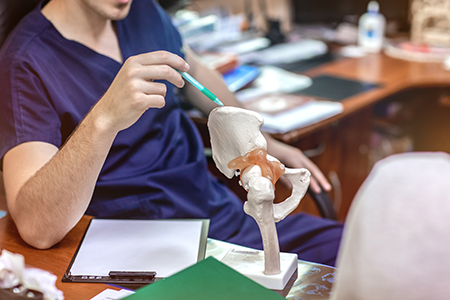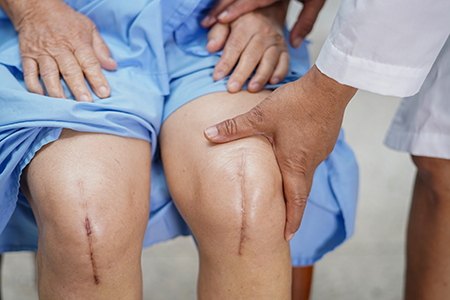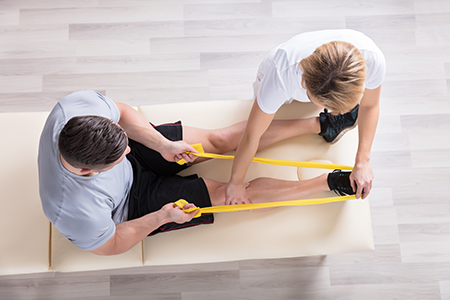Common Joint Replacement Surgeries

More than a million Americans have a hip or knee replaced each year. Though hips and knees are replaced most often, other joints qualify for joint replacement surgery, including shoulders, fingers, ankles, and elbows.

Why does someone need a joint replacement?
Joints can be damaged by arthritis, injury, and other diseases and causes. This can cause pain, stiffness, and swelling. Disease and damage inside the joint can limit blood flow, which causes problems in bone repair. Joint replacement surgery removes damaged or diseased parts of a joint and replaces them with new, man-made parts.

Knee Replacement Surgery
The knee joint is the largest joint in the body. It is the “hinge” joint of the leg and allows the leg to bend and straighten. The knee joint is located at the meeting point of the thighbone (femur) and the shinbone (tibia). The kneecap (patella) covers the area where the two bones meet.
During total knee replacement surgery, your knee’s damaged part is removed and replaced with an implant or prosthesis.
Your surgeon will choose the implant that is best suited for your age, needs, and lifestyle. Implants are made of various materials: stainless steel, titanium, chrome, cobalt, or polyethylene. Bone cement may also be used in the repair.
During total knee replacement surgery, a relatively thin amount of bone is removed from the end of the thighbone, the top of the leg bone, and the kneecap’s underside. This creates bone surfaces that allow the implant to have a good fit.
Most of the knee’s major ligaments and tendons are left in place so that the knee can bend and straighten yet remain steady in position from side-to-side and front-to-back.

Hip Replacement Surgery
The hip joint helps us keep our balance and supports our weight in all of its movements. The upper end of the leg bone (femur) has a rounded head (femoral head) that fits into a socket (acetabulum) in the pelvis to form the hip joint.
During total hip replacement surgery, the hip’s damaged part is removed and replaced with implants, called components. Your surgeon selects the components that are best for you based on your age, activity level, and body type.
New joints generally last at least 10 to 15 years. Therefore, younger patients may need to have the same damaged joint replaced more than once.

Joint Replacement Surgery: Risks
The risks of joint surgery will depend on your overall health and your joints’ health before surgery and the type of surgery done.
Many hospitals and doctors have been replacing joints for several decades, and this experience results in better patient outcomes. ConnectCare3’s Nurse Navigators can help you identify well-qualified surgeons with a specific background in joint replacements and provide you with additional tools and resources so you are able to make well-informed decisions about your procedure.

Joint Replacement Surgery: Recovery
You will probably need to stay in the hospital for a few days with knee or hip surgery. If you are elderly or have additional disabilities, you may need to spend several weeks in an intermediate-care facility before going home. You and your team of doctors will determine how long you stay in the hospital.
At first, you will walk with a walker or crutches. You may have some temporary pain in the new joint because your muscles are weak from not being used. Physical therapy can begin the day after surgery to help strengthen the muscles around the new joint and help you regain motion in the joint. A physical therapist will help you with gentle, range-of-motion exercises.

Sources:
- National Institute of Arthritis and Musculoskeletal and Skin Diseases. “Joint Replacement Surgery”
- The Cleveland Clinic. “A Patient’s Guide to Total Joint Replacement and Complete Care”
Download the Free Resource
Access a printer-friendly version of the resource to reference later.